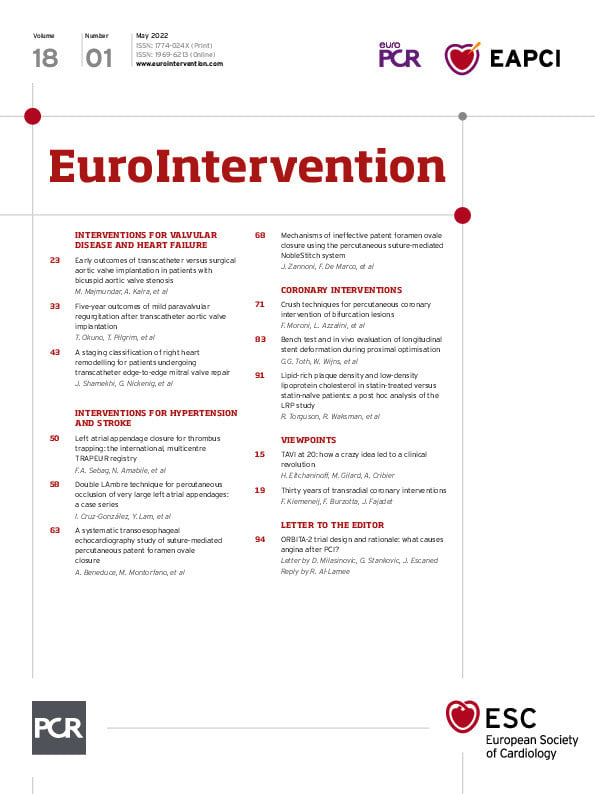We read with interest the recent description of the design and rationale of the ORBITA (Objective Randomized Blinded Investigation with optimal medical Therapy of Angioplasty in Stable Angina)-2 trial1, which is a double-blinded, placebo-controlled investigation of the effect of percutaneous coronary intervention (PCI) on the occurrence of anginal symptoms, reported daily on an ordinal scale that also includes the use of antianginal medication, in patients with chronic coronary syndrome. So far, 130 of the planned 284 patients have been randomised.
The authors are to be commended for implementing important protocol modifications to address some of the methodological issues recognised in the aftermath of the original ORBITA trial2. In accordance with the primary research question - determining whether PCI improves anginal symptoms - and respecting the clinical need to predict the success of PCI, the authors report a set of predefined stratified analyses that would describe the relationship of both non-invasive (stress echocardiography/exercise test) and invasive (fractional flow reserve [FFR]/instantaneous wave-free ratio [iFR]) baseline tests of ischaemia with the occurrence of angina in the follow-up. However, we believe that the current study design will not be able to detect the two sources of residual ischaemia post-PCI, which currently are receiving great attention. First, we considered patients who, despite a good angiographic result, present residual flow-limiting disease in their coronary vessels. Two recent studies have shown that a substantial number of patients (25%-30%) do not achieve post-PCI FFR3 and iFR4 values above the ischaemic threshold, despite optimal angiographic results. Moreover, in the first ORBITA trial2, baseline FFR and iFR did not correlate with post-PCI angina, which led to the decision that in the ORBITA-2 trial those values will be known to the operators performing PCI, thus likely curtailing the distribution of baseline FFR and iFR values and so impairing the ability to accurately assess their prediction capacity. In that light, having the post-PCI FFR and iFR values collected may be even more relevant to enhance the prediction of PCI benefit and thus aid clinical patient stratification. Second, patients with angina of microvascular or vasomotor origin, who are likely to continue having angina and myocardial ischaemia after PCI, unless identified and treated, may further obscure the effects of PCI. Therefore, in addition to inadequate appraisal of the value of PCI to relieve angina in an individual patient, uneven distribution of coronary microvascular dysfunction (CMD) and/or provocable coronary artery spasm across the groups despite randomisation may have a confounding effect on the trial’s primary outcome.
Of note, the ORBITA-2 protocol does implement exercise testing at the end of the 12-week follow-up period after PCI. Therefore, an additional stratified analysis, further to those described in the Supplementary Appendix 8, might be to evaluate a posteriori the effects of PCI on angina based on the corresponding results of pre- and post-PCI non-invasive tests of myocardial ischaemia. This approach may mirror the initial validation studies of FFR5, which by matching baseline ischaemia on non-invasive tests to the negative result following PCI on those same tests, reduced the impact of non-obstructive sources of ischaemia.
In summary, we believe that as our field moves forward to incorporate causes of ischaemia and angina beyond significant epicardial stenosis in clinical decision-making pathways, inclusion of post-PCI FFR/iFR and CMD assessment may provide additional valuable information from the landmark ORBITA-2 trial.
Conflict of interest statement
D. Milasinovic reports speaker fees from Abbott. J. Escaned reports serving as advisory board member and/or speaker for Abbott, Boston Scientific, and Philips. G. Stankovic reports speaker fees from Abbott.
Supplementary data
To read the full content of this article, please download the PDF.

